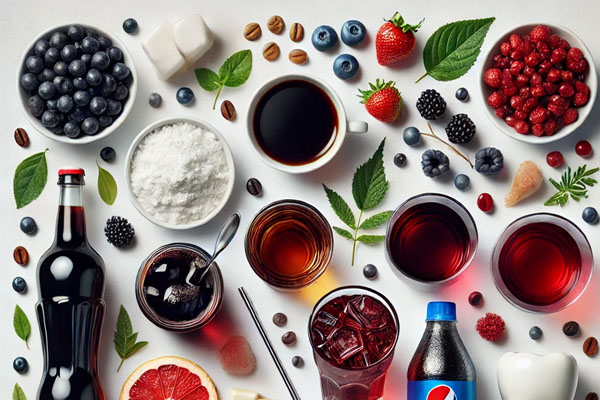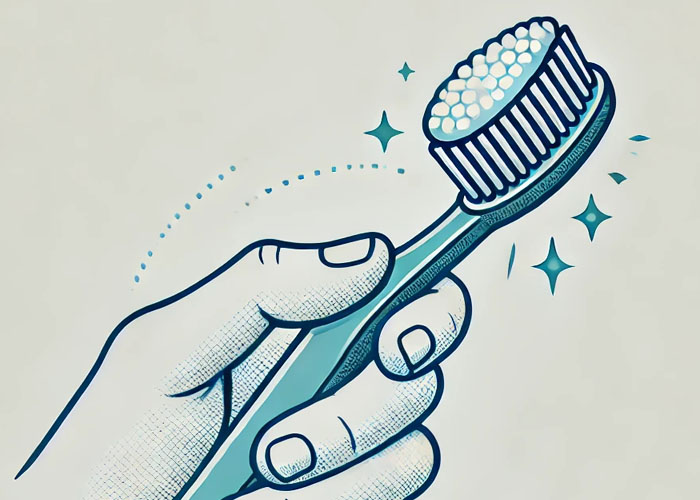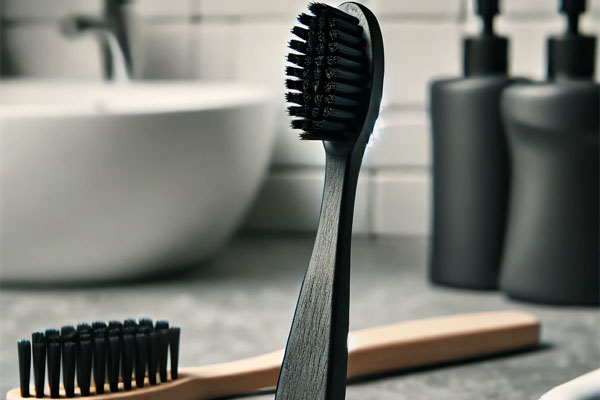A beautiful smile, indicated by the whiteness of teeth, is not only a confidence booster but also a sign of a healthy mouth. Below, I present eighteen natural and professional methods for whitening your teeth and achieving the perfect smile.
1.Use Fluoride Whitening Toothpaste
When using whitening toothpaste, one with hydrogen peroxide or baking soda, the surface stains will be eliminated gradually. Daily brushing at least twice is appropriate for dental health but using whitening toothpaste goes a notch higher in gradually lightening your teeth. In this regard, one should look for products approved by the ADA to ensure their regular use.
Extra Tip: For optimal results, use whitening toothpaste with a soft brush which will help in avoiding bleeding gums and eroding the teeth enamel.
2. Use Activated Charcoal
This substance has the ability to absorb discoloration on one’s teeth, making it an ideal whitening product. It is recommended to brush using toothpaste containing charcoal or making it at home by mixing activated charcoal with a little amount of water.
However, activated charcoal should be used with some precautions because its particles are abrasive, and if eaten with the teeth, they can cause some wearing of the enamel. Dentists recommend using it no more than once or twice a week and brushing your teeth with a normal fluoride toothpaste for protection against cavities.
Extra Tip: Rinse your mouth to expel temporary black deposit which forms on the gums or the teeth after its use.
3. Oil Pulling with Coconut Oil
Coconut oil: If you rinse your mouth with it for 10–15 minutes daily, it will kill germs that cause bacterial growth and remove surface stains. In addition to using it to maintain a white colored teeth, this old Ayurveda method has also been seen to possess the capability of eradicating plaque and swelling that affects the gums.
Extra Tip: Oil pulling should be done in the morning to increase the effectiveness and it should be done before brushing your teeth.
4. Cosmetic Tooth Whitening Procedures
For drastic whitening, see your dental professional for options such as in-office whitening or light activated whitening. These treatments employ highly concentrated solutions for whitening teeth, and the process is carried out under professional supervision to enhance safety and efficiency.
While being more costly than using chemicals over the counter, professional whitening can make the teeth up eight shades whiter in one session only. For the take-home kits, the dentists can also prepare individual trays that perfectly fit your teeth.
Extra Tip: To extend the outcomes, you should leave from the dentist place with both in-office treatments and home maintenance touch-ups.
5. At-Home Whitening Kits
Over-the-counter whitening products include trays or strips with whitening gels ideal for moderate whitening preferably at home. Different from some professional treatments, these kits have lower levels of the whitening agent to avoid endangering sensitive teeth.
Select from the best brands and guide yourself through the procedures outlined and avoid over-whitening which causes sensitivity on the teeth or inflammation of the gums. The effects can be seen(let it work) within a few weeks if used regularly.
Extra Tip: You should preferably use the kit in the evening so that you do not have any food or drink that stains the teeth immediately after the treatment.
6. Steer Clear From Beverages
Avoid these drinks: coffee, tea, red wine, and those sodas which are colored dark. These products contain tannins, which can stick to the surface of your teeth and cause staining.
Extra Tip: If you have to take these drinks, be sure to use water to rinse your mouth or use a toothbrush and clean your teeth after 30 minutes to remove the stains.

7. Rinse wash with hydrogen peroxide
Hydrogen peroxide when diluted with water and used as a mouth wash gradually reduces stains. Hydrogen peroxide is very weak bleach that does not have the strength to bleach your teeth in one go rather, it softens the stains and gradually whitens them.
But in case of frequent use one may experience sensitivity and further gum irritation. Use it two to three times a week, and remember to dilute it before rinsing your mouth.
Extra Tip: Hydrogen peroxide and baking soda when mixed can give you an easy to make whitening paste.
8. Whitening Strips
Whitening strips can be bought non-prescription and are a great way to deal with stained teeth. They stick to the surface of your teeth this enables the whitening agent to get into the enamel and remove stains.
Whitening starts appearing in a week, often with a stronger color in 10-14 days. Select narrow strips that will fit good on your teeth and do not eat or drink when these are on for the best results.
Extra Tip: Choose those strips that are special for sensitive teeth if you feel a burn while using them.
9. Apple Cider Vinegar
A mixture of diluted apple cider vinegar and water can help wash away plaque and stains due to its acidic nature. However, it is important to rinse your mouth thoroughly with clean water afterward to neutralize the acidity and protect your enamel. Drinking beverages made with apple cider vinegar can also have less direct contact with your teeth, minimizing its effects. To further reduce potential harm, use a straw when consuming apple cider vinegar beverages.
Extra Tip: For a milder and safer solution, mix equal parts (50 percent) apple cider vinegar and water.
10. Try Baking Soda
Baking soda is a mildly abrasive substance that can effectively remove surface stains from teeth. It is safe for occasional use and can be mixed with water or toothpaste to aid in whitening your teeth.
However, excessive use of baking soda should be avoided, as its abrasiveness can contribute to the erosion of your enamel over time. To achieve the best results, use it no more than once or twice a week.
Extra Tip: To enhance its cleaning power, add a pinch of salt to the mixture.
11. Consume Fruits and Vegetables
Crunchy foods such as apples, carrots, and celery have the natural advantage of helping to clean teeth by removing plaque and stains as you chew. This is because they are high in water content, which stimulates saliva production—a natural agent that rinses away debris and bacteria.
Extra Tip: Pair these snacks with water to support overall body cleansing while complementing their natural teeth-cleaning properties.
12. Don’t Use Cigarettes
Tobacco use has several negative effects, including stained and discolored teeth. It also contributes to the development of gum diseases such as gingivitis and increases the likelihood of bad breath, also known as halitosis. While smiling has many benefits, quitting tobacco is far more beneficial for both your oral and overall health.
Extra Tip: Reduce tobacco use and work toward eliminating it entirely. Adopt better oral hygiene practices, such as chewing sugar-free gum, to support your transition and maintain a healthier smile.
13. Drink Plenty of Water
Drinking water after a meal helps cleanse the teeth by removing food particles and bacteria that cause discoloration and contribute to poor oral health. Staying hydrated also reduces the risk of plaque formation caused by dry mouth and helps prevent further discoloration.
Extra Tip: Rinse your mouth after meals or snacks, and take a sip of water after consuming foods and beverages that can stain teeth.
14. Use a Whitening Mouthwash
Using a whitening mouthwash can significantly help maintain a bright smile when used occasionally. It serves as a valuable supplement to your oral care routine, particularly when combined with other whitening procedures.
Extra Tip: Choose a mouthwash containing hydrogen peroxide to enhance the whitening effects of your dental care products.
15. Eat Strawberries
Fruits such as strawberries contain vitamin C and malic acid, which work on the surface of the teeth to remove stains. You can crush strawberries into a paste and use it as a natural remedy for teeth whitening, or simply chew them for an added whitening benefit.
Extra Tip: For enhanced results, mix baking soda with the strawberry paste before applying it to your teeth.
16. Continual Dental Cleanings
To remove surface stains, plaque, and tartar that brushing alone cannot eliminate, schedule regular dental cleanings. Professional cleanings also help maintain the health of your gums, providing comprehensive oral care benefits.
Extra Tip: To preserve your oral health and maintain teeth-whitening results, visit your dentist every six months.
17. Steer Clear Of Acidic Foods
Acidic foods and beverages, such as sodas and citrus fruits, can weaken enamel and make stains more visible. Consume them sparingly, and always rinse your mouth with water afterward to minimize their effects.
Extra Tip: To reduce the risk of damage, use toothpaste designed to strengthen enamel when consuming acidic foods.
18. Use Whitening Pens
Whitening pens are portable and easy to use. They allow you to apply a precise amount of bleaching gel to brighten your smile between dental visits. The gel works by coating your teeth, hardening quickly, and effectively removing surface stains.
Extra Tip: Keep a whitening pen with you, especially for quick touch-ups before events or photographs.
Final Thoughts
It is crucial to maintain a bright smile by following consistent oral care practices. Whether you choose natural or professional whitening methods, consistency is key to achieving the desired results. Always consult your dentist before starting any whitening process to avoid complications and protect your teeth and gums.
Which of these methods would you consider trying first with your friends?

